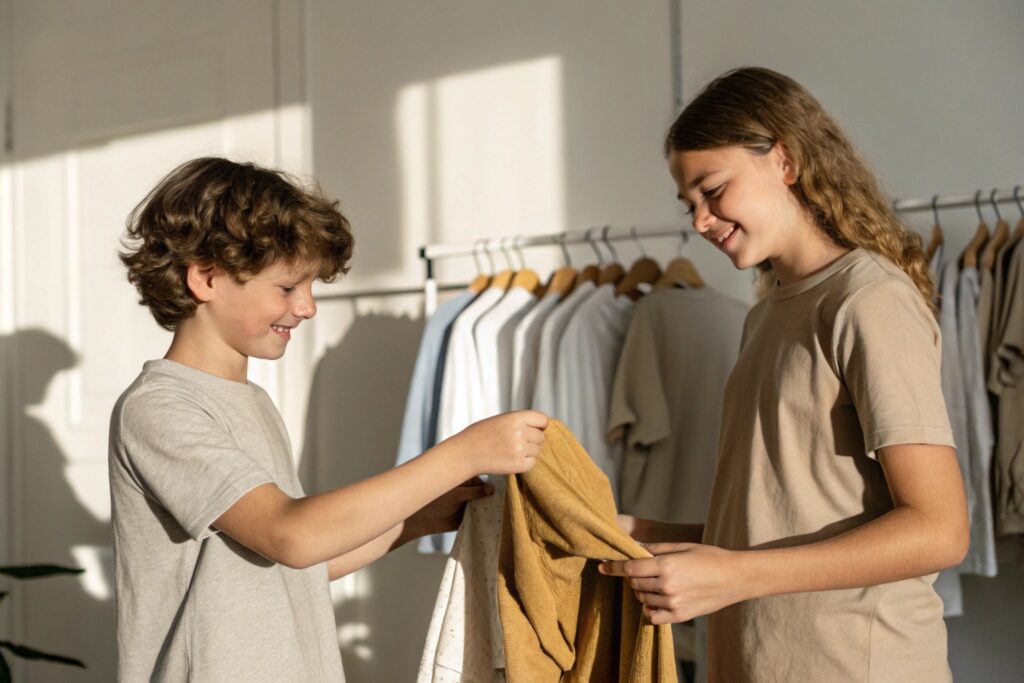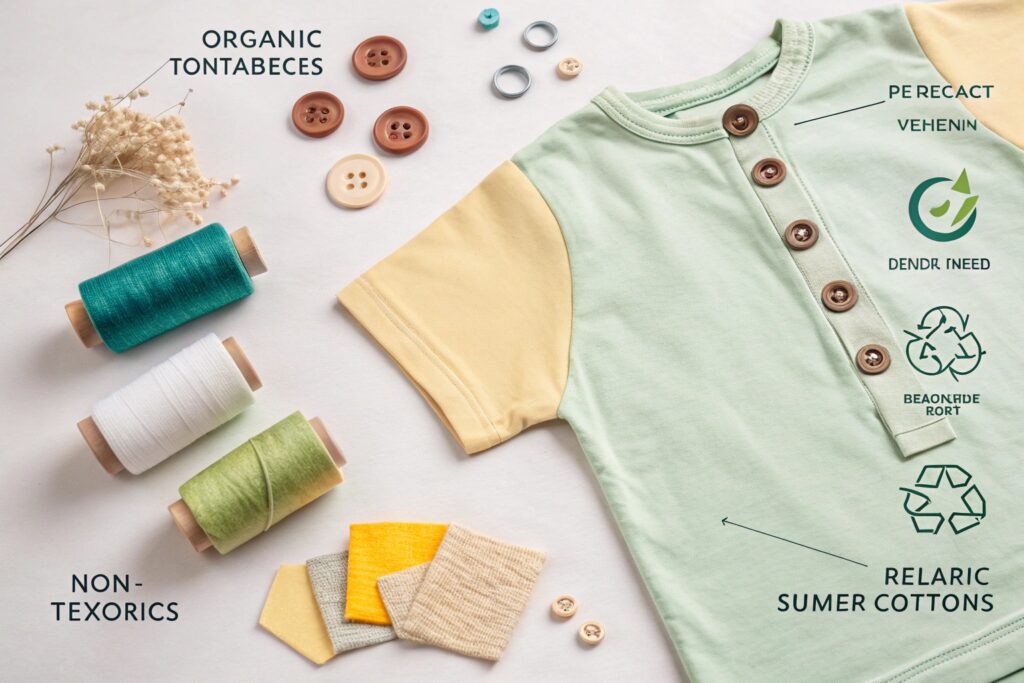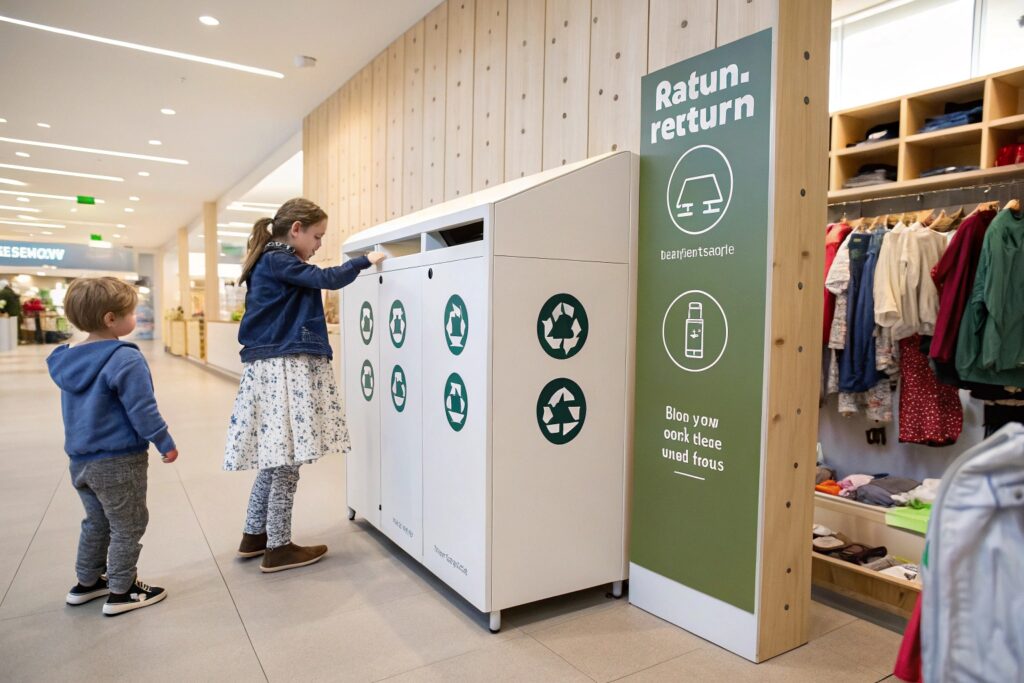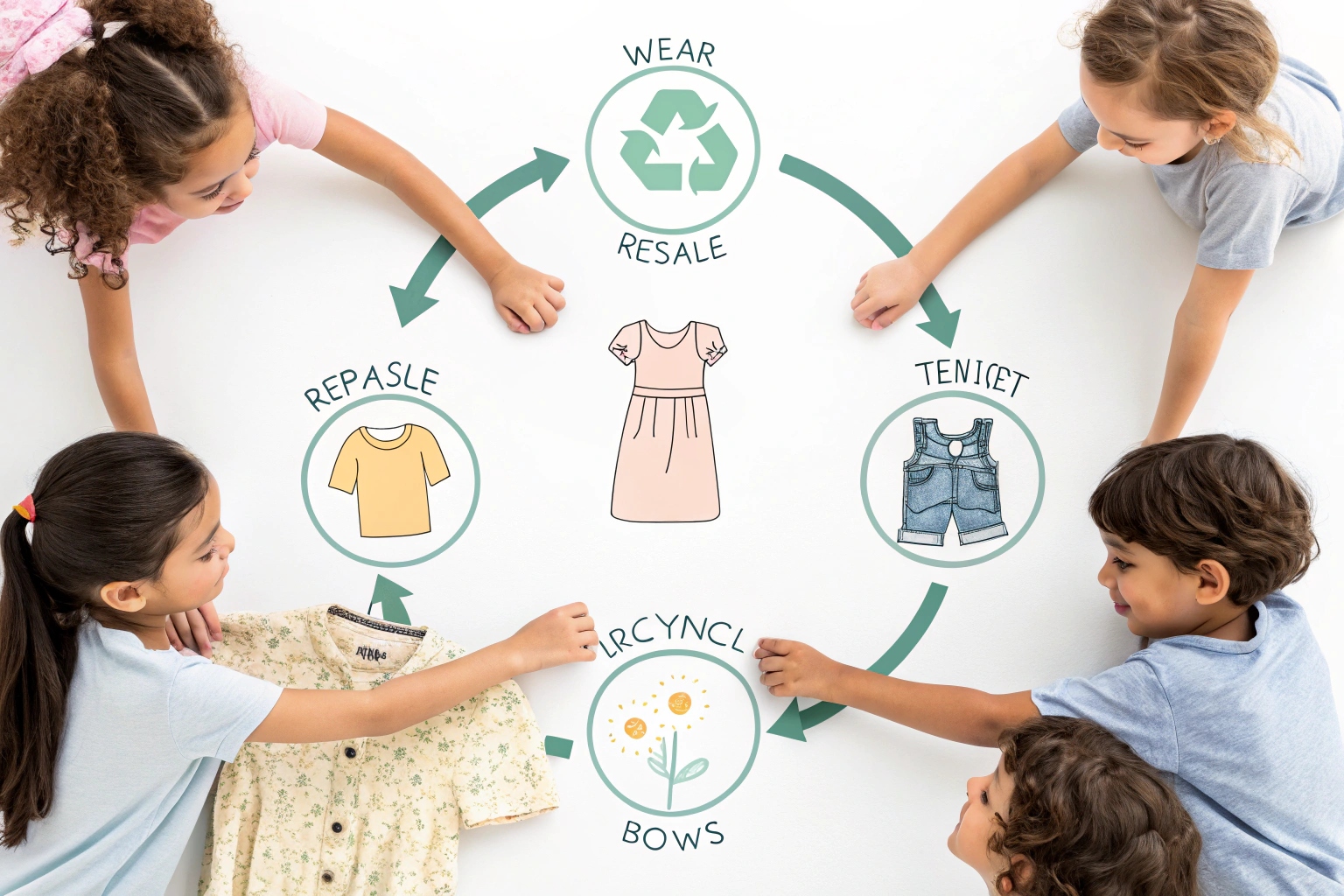Fast fashion in kidswear causes fast waste—outgrown clothes pile up, and landfills grow.
A circular capsule model for kidswear reduces waste, extends garment life, and encourages resale, reuse, and recycling. It’s the smart, sustainable future for conscious brands.
At Fumao Clothing, we work with brands to create closed-loop capsule systems that think beyond first wear. Here’s how you can join the circular movement and build kidswear that lasts—and lives again.
What Circular Fashion Means for Children’s Clothing?
Kidswear doesn’t last long—not because it wears out, but because kids grow fast.
Circular fashion in children’s clothing means designing garments to be reused, resold, repaired, or recycled—extending their lifecycle and reducing textile waste.

Why is circular fashion especially important in the kidswear category compared to adult clothing?
Children outgrow clothes faster than they wear them out. That creates a perfect storm: constant repurchasing, increased textile waste, and unused garments sitting in closets. In adult fashion, a shirt might last five years. In kidswear? Sometimes just three months.
Circular kidswear tackles this with intentionality. Garments are made with durability, sizing flexibility, and recyclability in mind. Instead of ending up in the trash, they move into second-hand markets, siblings’ closets, or textile recovery programs.
How does the capsule format naturally support circularity in kids’ fashion?
Capsules are lean and intentional. By offering fewer, more versatile pieces, brands encourage parents to choose quality over quantity. When designed circularly, these pieces are also easier to:
- Repair (fewer parts, simple construction)
- Resell (neutral style, timeless colors)
- Recycle (single-material designs)
At Fumao Clothing, we recommend capsule layouts that maximize reusability. Think elastic waists, unisex colorways, and reinforced stitching. This builds a foundation for second, third, and fourth lives.
Designing Kidswear Capsules with End-of-Life in Mind
Designing for durability is not enough—true circularity plans for what happens after the last wear.
Circular capsule design means selecting components, construction, and finishes that allow clothes to be reused, disassembled, or recycled after their original life.

What specific design choices support garment recycling or easy repair in capsule collections?
Here are some principles we use at Fumao Clothing when helping brands develop circular kidswear:
| Design Element | Circular Consideration |
|---|---|
| Fabric | Use mono-materials like 100% organic cotton |
| Trims | Use biodegradable buttons or recyclable zippers |
| Seams | Reinforced flatlock seams for easy repair |
| Dyeing | Opt for GOTS-approved low-impact dyes |
| Labels | Use removable or recycled content brand tags |
We also discourage mixing synthetics with natural fibers, as they complicate recycling. Instead, we favor simplified fiber blends and offer “design for disassembly” sessions during the tech pack phase.
How can brands communicate end-of-life options clearly to customers and encourage proper disposal or reuse?
We suggest labeling each item with care instructions and lifecycle info, like:
“This tee is 100% organic cotton and can be composted or returned to our recycling partner.”
Some clients even include QR codes on tags that link to:
- Return portals
- Local textile banks
- Second-hand resale platforms
- DIY repair guides
When customers know what to do at the end of a garment’s life, they’re more likely to take action. Circularity starts with design—but only works with education.
How to Integrate Take-Back and Resale Programs
Circular fashion needs a circular flow—and that includes getting clothes back after the first owner is done.
Brands can integrate take-back and resale programs to collect used garments, resell them, or send them for responsible recycling. These systems close the loop.

What types of take-back programs can small or mid-sized kidswear brands implement realistically?
You don’t need to be Patagonia to launch a take-back program. Here are a few models we’ve helped clients use:
| Model | Description | Pros |
|---|---|---|
| Mail-In Returns | Provide return labels for worn items | Low barrier, scalable |
| Store Credit Buybacks | Offer discounts for future purchases | Drives loyalty |
| Partnered Resale Platform | Integrate with ThredUP or Kidizen | No warehouse needed |
| In-House Resale | Inspect and resell through your own site | Full control, branding value |
At Fumao, we assist clients by adding QR codes to care labels and integrating return forms into Shopify or other e-commerce systems. Take-back shouldn’t feel like an extra burden—it should feel like part of the brand promise.
How do resale and secondhand capsule programs support customer loyalty and sustainability goals?
Resale builds loyalty in several ways:
- Trust: Customers know you’re not selling disposables.
- Savings: Parents can pass items down or resell them for credit.
- Values: Your brand becomes a community, not just a shop.
One of our European clients created a peer-to-peer capsule resale marketplace. It boosted their retention rate by 40% and extended average product lifespan by 2.3x.
Capsule resale turns temporary buyers into lifelong advocates.
Best Materials for Recyclable and Durable Kidswear
The right fabric makes all the difference—it decides how long an item lasts and what happens when it’s done.
Choose fabrics that balance comfort, performance, and recyclability—ideally certified and mono-material. Simplicity is key to circularity.

What are the top recommended fabrics for circular kidswear capsules, and what are their benefits?
Here are materials we frequently recommend for circular capsule brands:
| Fabric | Circular Value | Best Use Case |
|---|---|---|
| Organic Cotton (GOTS) | Fully biodegradable, easy to recycle | Tees, bodysuits, basics |
| Recycled Cotton (GRS) | Closed-loop potential, less resource use | Joggers, sweatshirts |
| TENCEL™ Lyocell | Compostable, low-impact production | Dresses, rompers |
| Hemp-Cotton Blend | Extremely durable, antibacterial | Outerwear, pants |
| Recycled Polyester | Non-biodegradable but recyclable | Jackets, sporty layers |
We avoid coated fabrics, blended synthetics, and chemical-heavy dye jobs. These make recycling harder and reduce circular viability.
How can brands balance softness, color fastness, and durability when choosing sustainable fabrics?
We often build material test kits with the client. Each swatch is rated for:
- Shrinkage
- Fade resistance
- Stretch recovery
- Pilling after 10+ washes
We then recommend finishes like enzyme washes (softening), reactive dyes (fade resistance), or reinforced knees/elbows for high-wear pieces. Circular doesn’t mean sacrificing performance—it means designing smarter.
Conclusion
A circular kidswear capsule model gives every garment a second chance. With intentional design, eco-materials, and smart return systems, brands can turn waste into value and parents into long-term fans.










